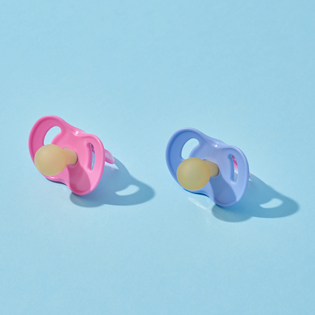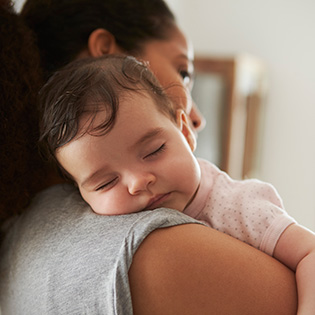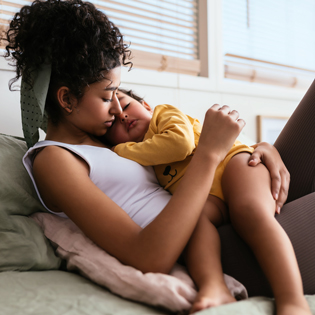Every veteran parent has been there at least once: Sitting up late at night with a sniffling, feverish, coughing child, whose symptoms seemingly pop up out of nowhere or get worse as the hours wear on. Like most parents, you’re left wondering what to do. Call your child’s doctor? Go to the emergency room? Wait until the morning?
To make matters worse, your guard may well be up over the latest bug making headlines. A few years ago, it was swine flu (which, if you and your child have received your annual influenza vaccine this year, you’re protected against, along with two or three other more common strains of the flu). More recently, Ebola and enterovirus-D68 (EV-D68) have been cause for hand-wringing among concerned parents. Fortunately while Ebola is dangerous, it does not pose a significant risk in the US — and while EV-D68 infections have been more widespread, in all likelihood the virus will not be a problem for your child.
So while you may not be able to exactly rest during a bout of 3 a.m. coughs, you can feel a bit more relaxed knowing that more likely than not, the symptoms your child experiences are related to a common seasonal virus that your child’s immune system will eventually take care of on its own. Still, it doesn’t hurt to know the difference between symptoms that warrant a trip to the emergency room versus those you can treat at home.
Keep in mind that although many practices have a doctor on-call who can help you and answer questions, 24 hours a day, 7 days a week, the person who answers may not be the doctor you see regularly, and you may have to wait for someone to return your call. Rule of thumb: if you’re worried about your little one and your doctor’s office is taking too long to get back to you, or if symptoms are getting worse, do not hesitate to head to the emergency room.
More on Caring for a Sick Kid
Read on for tips to recognize and treat five of the most common symptoms in kids.
Coughs
Coughing is a very common cold symptom — and while it sure sounds awful, it’s generally not a sign of anything serious. The main cause behind a cough is mucus, which drains down the nose to irritate the back of the throat.
When to monitor it yourself:
- It’s infrequent (she's coughing on and off and not continuously) and dry. This probably means your child has a sore throat caused by a cold or allergies. Run a cool-mist humidifier, give your child lots of fluids and use saline drops. The American Academy of Pediatrics advises against using cough and cold medications if your child is under 6 years old, since studies show they’re no more effective than a placebo at controlling symptoms, and they can result in dangerous side effects.
- It has a "barking" sound. This probably indicates croup, which is also usually a viral infection. First, try to calm your baby. Then run the shower and let her breathe in the steamy air; within 15 to 20 minutes, the warm, moist air should help breathing. Sometimes, however, a barky cough may take longer to improve. If steamy air doesn’t do the trick, call the doctor as she may need a breathing treatment (an aerosol with medication). A cool mist humidifier in her nursery also helps; keep her in an upright position, and offer a pain reliever if she is 6 months or older. Croup can reoccur in the same night, so don't be alarmed. Just treat it the same way.
- It’s related to a cold. That means your child’s cough produces mucous and is accompanied by a runny nose and sore throat. Give her saline nose drops if she’s too young to blow her nose; a cool mist humidifier in her nursery and a warm bath also help. A spoonful of honey can soothe coughs — but it’s only safe if your child is 1 year or older. If you’d like to try an over-the-counter cough medicine, check with her doctor first.
- It only happens in certain circumstances. If your child’s cough is dry, doesn’t appear to be related to a cold, and crops up only at night or in the morning or when your toddler is active, it could be a sign of asthma. Keep track of what seems to trigger the cough (exercise, cold air, allergies) and make an appointment with your doctor.
When to call the doctor:
- It’s accompanied by fever (see below). Your baby has an infection, which could be as mild as a cold — or more serious, like the flu.
- Your baby is 4 months or younger. Small infants are more vulnerable to infections, and coughing is uncommon in small infants.
- It’s severe (hard and rapid), dry and comes in "spells" that may last up to a minute, followed by a "whoop" sound. Extreme coughing can even cause vomiting when the spell is over. Your child may have pertussis (or whooping cough), especially if there have been cases reported in your community and she hasn't yet completed the full vaccine series.
- Coughing and wheezing develop after what seems to be common cold symptoms. It could indicate either asthma or bronchiolitis. Asthma is uncommon in children under the age of 2, while the vast majority of cases of bronchiolitis are in babies under the age of 1. It is always a good idea to call your doctor if you hear wheezing, especially if there hasn't been a previous diagnosis of asthma. Bronchiolitis can usually be treated at home, but again, best to touch base with your doctor if she develops a cough with wheezing. Call 911 if your child starts breathing rapidly (50 breaths per minute or more if your child is 2 months to 1 year, and 40 breaths per minute or more if your child is 1 to 5 years old), or if breathing is labored and/or the color of her skin turns pale or dusky.
- It started out as a cough, runny nose, muscle aches but now there's wheezing and she's breathing a little harder. These symptoms could indicate EV-D68, especially if there have been cases in your community. Most cases are mild and go away with time and rest, but some children are more prone to serious illness (especially if they already have asthma or other airway problems). If you can't reach your doctor's office after hours, and her breathing is becoming more labored, head to the ER.
What else to know:
If your child is under 4 months old, coughing is less common and could be the sign of something more serious — so it always warrants a visit to the doctor. And if she ever seems to be in distress or is having trouble breathing, call for medical help right away.
Phlegm
Phlegm is usually caused by a common seasonal virus and often accompanies a cough or cold. Even if it’s green, your child doesn’t necessarily need antibiotics — instead, it usually indicates her immune cells are fighting a viral infection (which can’t be helped with antibiotics), not a bacterial infection (which can). Either way, it’s still worth a trip to the doctor to check it out.
When to monitor it yourself:
Your child is congested. Whether your child has clear, white, yellow or green mucus, she likely has a run-of-the-mill cold. Moisten the air with a humidifier or cool air vaporizer, use saline drops, and encourage her to drink plenty of fluids.
When to call the doctor:
- Your child has a fever or swollen glands. If nasal mucus or coughing is accompanied by either of these symptoms, she may have a bacterial infection that needs to be treated with antibiotics.
- Her nasal discharge is bloody. Bloody nose discharge is usually a sign that the nose is irritated, which is very common in a cold. But it could also be a sign of other problems, such as a sinus infection (especially if discharge is thick, she has a low-grade fever, and she’s experiencing pain around eyes and nose), a foreign object is lodged in there, or there’s been trauma to the nose. If there’s a lot of bleeding (more than just bloody tinges in the mucus), it’s only coming from one side (especially if it’s foul-smelling), or your child has other symptoms suggesting a sinus infection (headaches, fever, cough, fatigue, sore throat, postnasal drip), your doctor needs to diagnose and treat your child.
What else to know:
Remember, in most cases, phlegm accompanied by congestion is just the body’s way of fighting off some type of infection — which means it’s most important to keep an eye on the accompanying symptoms.
Fever
A fever is any rectal temperature 100.4 degrees or higher. While fevers can be worrisome, fortunately most can be handled at home — though your child's age plays a major role in whether you should seek medical care.
When to monitor it yourself:
Generally it’s OK to monitor your child yourself if she doesn’t have any other symptoms (chills, sore throat, ear pain, diarrhea etc.) and is:
- 3 to 6 months and has a fever under 101 degrees
- Over 6 months and has a temperature of 102 degrees or less
In these cases, give her age-appropriate fever reducers to ease the discomfort, lukewarm baths, and encourage her to drink plenty of fluids that are appropriate for her age (breast milk, formula and water for babies until they are 1 year old; clear soup and broth, and foods with high water content like fruit or applesauce for older kids) to keep her hydrated.
When to call the doctor:
Always call the doctor if your child is:
- 3 months or younger and has a temperature of 100.4 degrees or higher, since her immune system hasn’t had as much experience fighting infections yet (if you can’t reach your doctor after office hours, head to the ER)
- 3 to 6 months and has a temperature of 101 degrees or more
- 6 months or younger and has a fever of 103 degrees or higher
- Under the age of 2 and has had an elevated temperature for more than 24 hours
- Any age and her temperature climbs to 104 or 105 degrees
- Has other symptoms with fever, such as:
- Sore throat, which can indicate a bacterial infection such as strep
- Fever and crying when urinating, signs of a urinary tract infection
- Swollen glands, which can indicate tonsillitis
- Ear pain or pulling on ear, suggesting an ear infection
- Diarrhea and/or vomiting, which usually mean a tummy bug — though there is an increased risk of dehydration with a fever
- Sever stomach pain that's more than an average tummy ache could indicate something serious like appendicitis
When to head to the ER:
If your child has a fever and is also extremely short of breath, refuses food, is vomiting, cries inconsolably, has difficulty waking, has a stiff neck or develops a rash or bruised-looking purple spots, she could have a more serious condition including meningitis, septicemia or a bloodstream infection that requires immediate medical treatment, so head to the ER right away.
What else to know:
A good rule of thumb to go by (which varies depending on your child’s age): A low fever is any temperature under 102 degrees, a moderate fever is 102 to 104 degrees, and a high fever is 104 degrees and over.
Vomiting or diarrhea
In kids, the culprit behind nausea, vomiting and diarrhea that occur together is usually a no-fun (but relatively harmless) virus (like rotavirus) that hitches a ride in the gastrointestinal tract, though occasionally it could be food poisoning from salmonella or E. coli (especially if other family members have the same symptoms). In most cases, your main priority is to make sure your child doesn’t become dehydrated — which is more likely to happen if she’s younger and especially if she has both vomiting and diarrhea. Signs of dehydration include no or minimal urination (more than six hours without a wet diaper in an infant, or not urinating about every 4 hours or so in toddlers during waking hours and urine that’s darker and scant), lethargy, dry mouth and fewer (or no) tears when crying. In babies, also look out for fussiness or a sunken soft spot on the top of the head.
When to monitor it yourself:
If your child is over 2 months old and has no other symptoms (such as severe stomach pain, high fever (see above), reduced urination, vomiting blood, etc.), keep an eye out for signs of dehydration. If she’s under 1 year old, give her oral rehydration fluids (a mixture of water, salts, sugar and minerals, such as Pedialyte); if she’s older, offer clear liquids (water, diluted juice, broth, Jell-O, Pedialyte, Popsicles or water).
When to call the doctor:
Always call your doctor if your child:
- Is under 2 months old and is not just spitting up, as babies can more easily become dehydrated
- Appears to be getting dehydrated and continues to have vomiting or diarrhea (she’ll need treatment right away)
- Is projectile or forceful vomiting — especially if she’s under 3 months old — as this may indicate a more serious problem including intestinal blockage
- Is vomiting and has a fever, especially if she’s less than 6 months old, as she may have a more serious infection and is at an elevated risk of becoming dehydrated
- Has severe stomach pain, or her stomach seems hard or bloated, as this can indicate an intestinal blockage or another more serious condition
- Has blood in her vomit or diarrhea or bile (a yellow-green liquid) in her vomit
What else to know:
If your child is vomiting or has diarrhea, do not force her to eat — she will let you know when she’s hungry. You should also call your doctor if vomiting is not better in 12 hours, or diarrhea isn't better after three days.










































 Trending On What to Expect
Trending On What to Expect





